Edward Nichols Coffey’s passion for the town’s history never wavered in his later years, even when doctors diagnosed him with cancer at age 80 and he had to be hospitalized for his first round of chemo, his daughter Laura Trautz recalled.
“He was very weak afterward, but I clearly remember picking him up at Bridgeport Hospital and him asking me to drive him to an old house in Monroe on our way home — it was going to be demolished soon and he wanted to be sure to take photos of it before it was gone,” she said of her late father.
Coffey, Monroe’s longtime historian, died at his daughter’s home, surrounded by his family on May 8, 2023, but his legacy lives on through the gazebo on the Monroe town green, which he helped design, his contributions toward the preservation of the town’s historic buildings and his book, “A Glimpse of Old Monroe.”
“I think my dad was most proud of writing the first town history, ‘A Glimpse of Old Monroe’,” Trautz said. “It was a huge project with extensive research, trying to gather old photographs and interview people. My family is most proud of what a giving, kind individual he was and how many lives he touched.”
According to the Forward of his book, it was a product of nearly two decades of Coffey’s research.
A teacher at Fairfield’s public schools for 40 years, Coffey served as Monroe’s acting town historian from 1972 to 1988, before being appointed as the official town historian in 1989.
“Ed was certainly a pioneer in our town’s history and will forever be present in all of our collections and buildings,” said Karen Cardi, president of the Monroe Historical Society.
“My dad was a seat of your pants kind of guy — didn’t usually do much planning, but when you were with him you were sure to have fun.” — Laura Trautz
Former first selectwoman, Karen Burnaska, remembers how Coffey served on the town’s Historic District Commission, and how he could always be relied upon for his knowledge of Monroe’s history for events such as the Sesquicentennial Celebration in 1973.
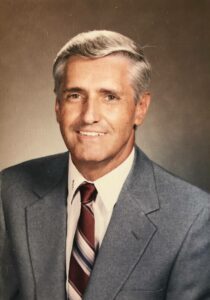
“He was an invaluable resource for the town and he was who I would call the go-to-person if you wanted to know anything about the history of Monroe,” Burnaska said during a telephone interview Wednesday. “He had it all in his head and he could explain what had happened before in the town.”
Burnaska said officials could always go back and look at Coffey’s book, “A Glimpse of Old Monroe”, for reference, adding how copies became scarce in the 1970s. She also expressed an appreciation for Coffey’s many years of devotion as a town volunteer.
“You can tell he was passionate,” she said. “He was knowledgeable. He truly cared about the town and wanted to preserve its history. His wife Marcia was involved too. He was honest. He was forthright. He spoke his mind, he had his opinions. I just found him to be an invaluable resource, his passing was a loss.”
Among Coffey’s contributions, he was the historical advisor for artist David Merrill’s mural in 1982.
“My family would like people to remember that he truly cared and was passionate about preserving the historical elements of the town of Monroe and didn’t want to see it get overdeveloped and lose touch with its past,” Trautz said.
Coffey and Marcia, his wife of 60 years, lived in Monroe for just as long. Here they raised their three children David, Jonathan and Laura, and the couple had four grandchildren and two great grandchildren.
“He was an extremely dedicated and caring husband, father and grandfather,” Trautz said. “He would do anything for his family.”
Trautz said her parents always made she and her two brothers their top priority.
“My dad taught during the day and my mom worked as a nurse, and worked the evening shift, so there was always someone home for us,” Trautz recalled. “Summers were awesome because my dad was off from teaching and we’d love swimming and relaxing by our pool and road trips, often to historical locations.”
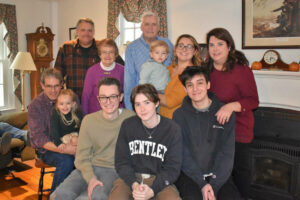
“My dad was a seat of your pants kind of guy — didn’t usually do much planning, but when you were with him you were sure to have fun,” she said. “He made every road trip an adventure.”
Trautz also marveled at her father’s dedication to his grandchildren, helping to raise his granddaughter who was born in 1990 and babysitting his grandsons three-days-a-week after retirement.
“There was nothing he didn’t do — diapers, feeding, taking them to school, activities, the playground or helping with homework … the list could go on and on,” Trautz said. “And he definitely loved to spoil his grandchildren.”
A love of history
Edward Coffey’s parents were John E. and Edith Nichols Coffey, and Trautz said her father’s love of history came from his mother.
“When my dad was a young boy he would ride his bicycle from his home in Bridgeport to the White Hills section of Shelton to spend the day with his grandparents on their farm (Nicholdale Farm),” she said. “On those bike rides he would often explore and fell in love with the town of Monroe. From a young age he was fascinated with history.”
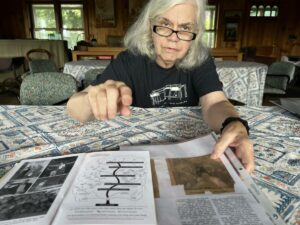
Terry Jones, a cousin of Coffey’s, and his wife Jean, owners of Jones Family Farms in Shelton, are still grateful to Coffey for his role in the preservation of the Nicholdale family dairy farm next door.
In 1992, the Iroquois pipeline project was coming through Nicholdale and the Jones’ farm properties, so the Jones family joined a community coalition to stop it.
Though the pipeline still came through, the activists not only ensured it passed through a noncritical wooded area, they took the opportunity to raise money through an easement.
Property owners pooled together the fees for the Shelton Land Trust, Bridgeport Hydraulic Company (now Aquarion) and the city of Shelton’s $1.3 million purchase of the 52-acre Nicholdale property, permanently preserving it as open space.
The major boost in funding came from the $972,000 the city received from the Iroquois Land Preservation and Enhancement Program, which could only be used for the purchase and preservation of open space or public recreation.
Jean said Coffey talked to journalists covering the issue, explaining the history of Nicholdale Farm and why it was important to preserve it. This helped rally public support to the cause, according to Jones.
“I appreciated his dedication to his community,” Jean said. “His passion was history and through history he was able to touch people’s lives.”
An enthusiasm for life
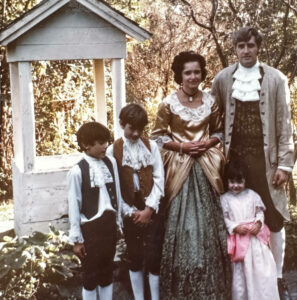
Coffey graduated from Fairfield College Preparatory School in 1957, earned a B.S. in education from Southern Connecticut State University in 1961 and an M.A. from Fairfield University in 1965. He was awarded his sixth year certificate in 1974.
He would go on to become a history teacher. He also loved restoring old houses and advising others who were interested in doing the same, organizing archeological digs, and lecturing on history and architecture.
Over the course of his 40-year education career, he taught at Osborn Hill Elementary, Pequot School, Fairfield Woods Middle School, Roger Ludlowe High School, and Fairfield High School. He loved teaching and was often told he made history come to life with his dynamic teaching style and field trips, according to his obituary.
“We knew he touched many lives, but my family has been truly touched by the hundreds of messages from his former students we’ve received since his passing,” said Trautz.
“The comments range from my dad getting them to love history, some mention that he helped spark an interest for them in architecture, some talk about the great field trips he’d plan to Sturbridge, Plymouth and Salem, Mass., and many mention what a kind person he was and his amazing smile,” she said. “He truly loved teaching and these messages have meant so much to our family.”
Coffey was a member of the Children of the American Revolution, became a member of the Sons of the American Revolution and was the historian for the local branch from 1966-1981.
He received the Educator award for outstanding contributions to the preservation of colonial history from the Daughter’s of Colonial Wars in 1983 and the Teacher of the Year award from the Daughter’s of the American Revolution in 1992.
“He was a great teacher,” Terry said. “A lot of his students wrote great comments online under his obituary. You could see how much they respected him.”
Terry said his father, Philip Jones, and Coffey worked closely together for the Monroe Historical Society.
Historical architecture
Coffey was instrumental in looking after the Monroe Center Cemetery. When Jean’s father-in-law retired, she took his place on the committee, working side-by-side with Coffey. However, Jean said they bonded over their mutual love of architecture, including residential architecture.
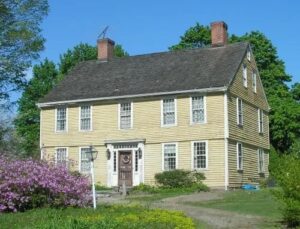
“He loved architecture,” she said. “He and his wife Marcia bought the Daniel Basset House, which was built in 1775.”
“My parents purchased this Georgian style home and the six acres of land surrounding it in the early ’70s and would spend many years restoring it,” Trautz recalled.
When the Joneses bought The Homestead in Shelton, a house built in 1867, Jean said Coffey shared his knowledge of historical architecture, while helping them to maintain it. Coffey taught Jean telltale ways to determine the time periods of old houses.
“He loved to give advice to others that were restoring old homes or who were interested in buying an old home,” Trautz said. “Besides his primary home on Monroe Turnpike, he would also purchase another historic home on Fan Hill Road in Monroe and restore that. Two of his children bought historic homes in the area and he loved to be a part of the restoration process.”
“I’ll always remember him as very kind and friendly,” Jean said. “He always had a smile and was humorous, but he would also call a spade a spade. He was just a really positive person. We always had things to chat about. I always appreciated him for his vast knowledge of history.”
All respectful comments with the commenter’s first and last name are welcome.

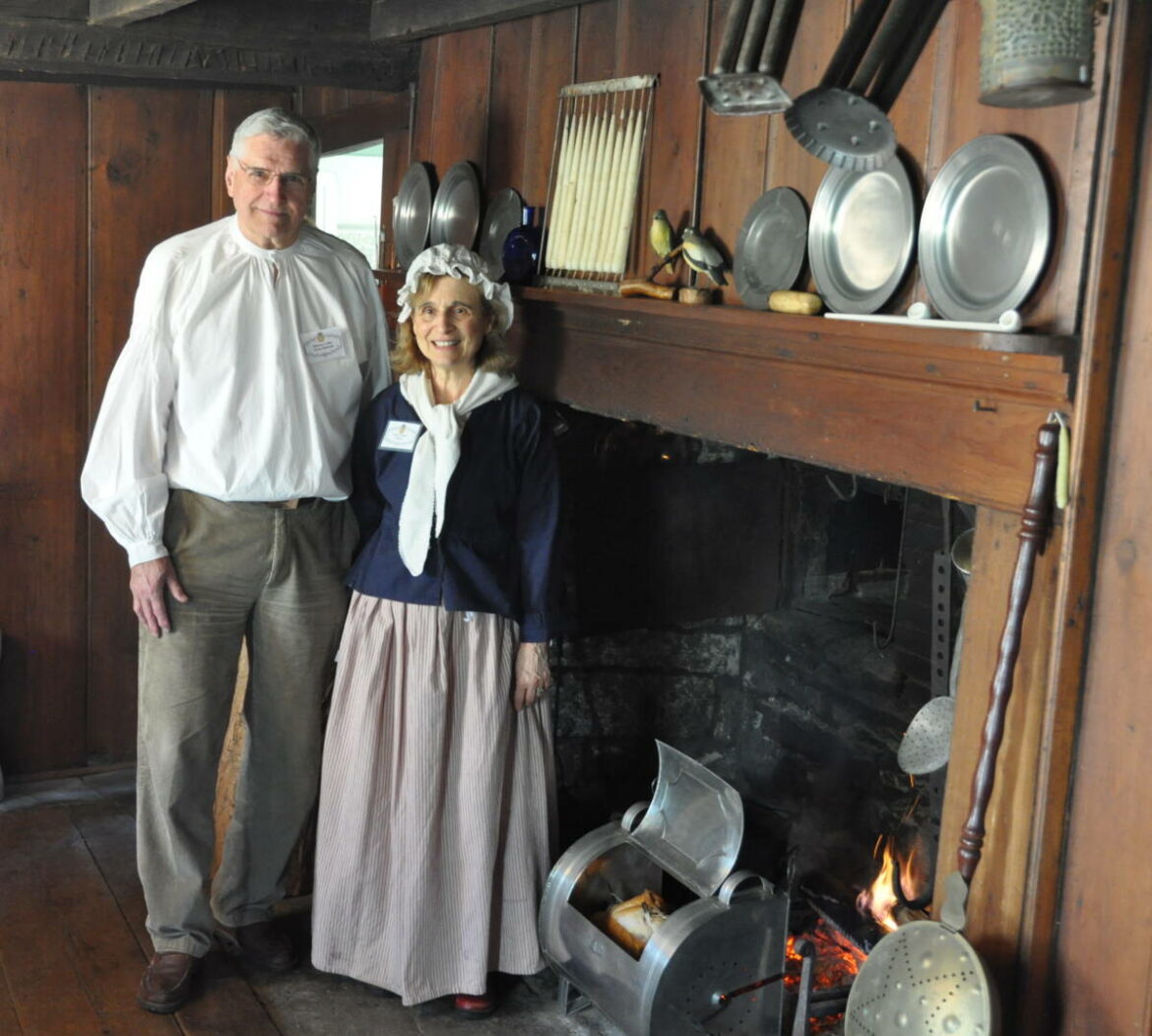


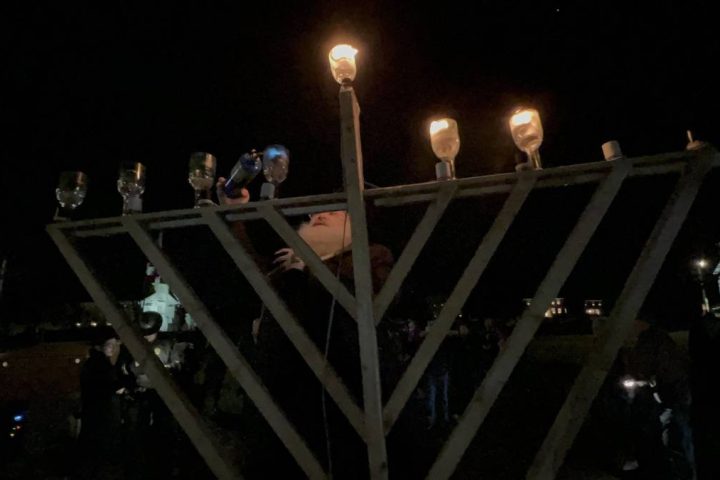
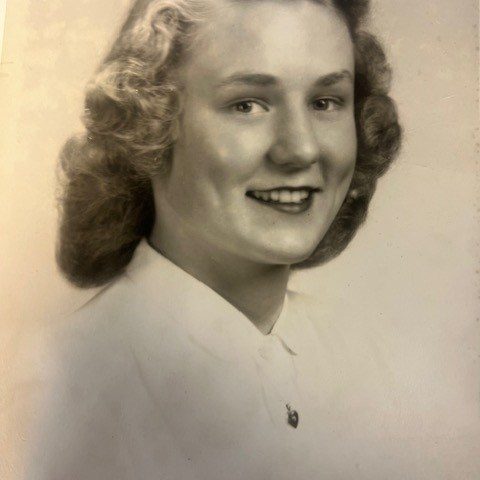
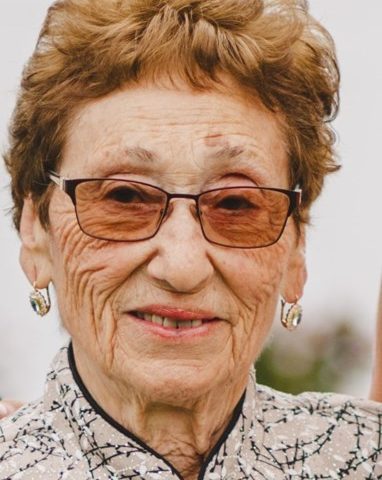
I am neighbors with the Trautz’s. He sometimes put my sister and I on the bus.